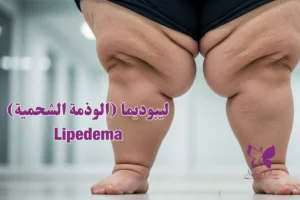Primary goal for surgical suture, at Freshness Center for Dermatology, Laser and Aesthetics in Hurghada, is the adduction (gathering of the wound margins) and the elimination of the space between the wound walls and edges so that the underlying tissues are held together. Healing can only occur properly if the two cut areas of tissue are aligned and remain intact. If the space is not eliminated, blood may collect in the wound resulting in a hematoma, thus weakening the strength of the wound, increasing the risk of infection.
What is surgical suture?
Surgical sutures are used to sew skin and other body tissues together to close a surgical incision or a tear caused by an injury. Surgical sutures are placed using a needle and surgical thread and secured with a surgical knot. Proper suture techniques also help reduce the risks of bleeding and infection that accompany all surgical incisions and skin injuries.
The technique of stitching leather tissue has been used for thousands of years. Today, it is used by surgeons, dentists, nurses, pediatricians and other medical personnel who have received special training in surgical suturing.
Who should undergo surgical sutures?
Patients usually get stitches after an injury or open surgery that has caused a large opening or a tear in the skin. Examples of such injuries include a simple tear in the skin on an arm or leg, a more complex tear in the face, an abdominal incision, or a median sternotomy.
Benefits of using surgical sutures
Correct surgical suture results in the following:
- Skin tissue repair.
- Easy healing of healthy skin.
- Reducing bleeding.
- Reducing bacterial contamination.
- Help achieve cutaneous hemostasis.
- Restore the normal function of the affected part of the body.
- Pleasant cosmetic results.
Types of threads used in surgical sutures
There are two types of suture materials used in this procedure:
absorbable sutures
They are made of natural materials that degrade when applied to the skin. The material degrades naturally after seven days, but is treated with chromium salts to delay the process, allowing it to maintain its strength for up to 2-3 weeks. Hence, it is completely absorbed by the body within 3 months.
There are also synthetic absorbable sutures made using Vicryl and Monocryl polymers, which are broken down by hydrolysis and are known to help reduce tissue reactions.
Non-absorbable sutures
They are made of silk, cotton, steel, nylon, proline, mercelain, and more. Since they cannot be broken down by the body's enzymes or even through hydrolysis, they are removed once the skin has sufficiently healed and tensile strength has been restored to a certain extent.
The exact length of time that the thread is removed varies in each case, but it tends to follow a general pattern depending on the location of the stitches. For example, the facial stitches are removed within 3 to 4 days, while the scalp and trunk stitches are removed within 5 to 7 days. On the other hand, arm or leg stitches are removed 7-10 days after surgery. While foot threads take longer to regain their strength, it usually takes up to 10 to 14 days.
You can also read: Dark circles treatment"
How is surgical suturing performed?
When placing the stitches, the surgeon inserts the tip of the needle vertically into the skin. When penetrating the upper layers of the skin, the stitched body part is slightly rolled up to allow the needle to reach the subcutaneous tissue before emerging from the surface of the skin. Regardless of the thread material,
Medical practitioners also use scalpels, forceps, skin hooks, and needle holders while placing the stitches. There are many suture techniques available, and doctors usually choose which technique to use based on the characteristics of the skin opening. Each technique has its advantages and disadvantages.
Intermittent simple surgical suture
Interrupted sutures are known for their ease of use, good tensile strength and reduced risk of wound edema. However, they do take a long time to set in, and tend to cause cross scars. To prevent this from happening, stitches must be removed early.
simple running stitching
Simple running suture is a basic technique used primarily for longer wounds with good, clean edges, as it reduces the risk of scarring from broken sutures and is easier to apply. However, there is a risk of loosening (which can occur if the suture material is accidentally torn) and curling of the surgical suture line, especially when used in patients with thinner skin.
Running lock stitching
Closed sutures are commonly used when a wound requires additional hemostasis due to percolation at its edges, and are known to increase tensile strength. But it puts the patient at an increased risk of tissue strangulation as well as microcirculation around the wound. Thus, surgeons only use it on areas where there is a good blood supply, such as the scalp.
Surgical suture under the skin
This type of suture is placed superficially away from the wound edge to maximize wound inversion.
hidden sewing
This surgical suture technique is widely used in areas with minimal skin tension and is known to produce good cosmetic results; Because it only penetrates the epidermis at the beginning and end of the sewing line. This means that there is absolutely no risk of cross-shadowing. However, it is not known to provide significant wound strength.
deep surgical suture
This technique is used for M, W-plasty and VY cuts, which can provide better long-term support compared to traditional angle stitch.
You can also read: Under-eye injection to treat dark circles"
Risks and possible complications of surgical suture
The following are the risks associated with the use of stitches:
- scarring;
- Infection.
- formation keloid.
- Heal weak skin.
- Hernia in the case of abdominal stitches.
To prevent or reduce the above risks, patients are instructed on how to care for their stitched wound and are advised to contact their doctor or surgeon at Tadara Skin, Laser & Aesthetic Center in Hurghada if they notice unusual symptoms, such as redness of the skin, red streaks around the wound, blood, pus secretion, fever, or when Open the thread.
You can also read: cleft lip"
that surgical suture It contributes to the stabilization of the wounds together until the healing process is complete. That is why the Freshness Center for Dermatology, Laser and Aesthetics in Hurghada offers cosmetic surgical sutures to all its clients to prevent many complications.






